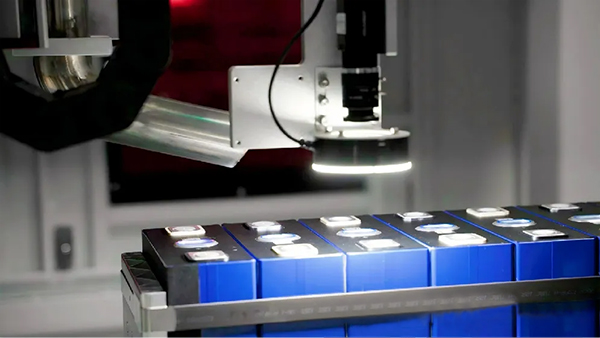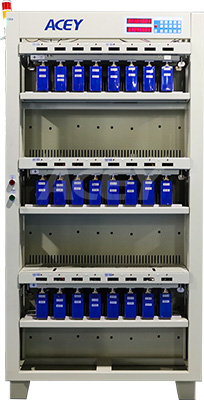Battery Pack Assembly Process Series 1 - Cell Pretreatment
1. Importance of Cell Pretreatment
Cell pretreatment is the first process in battery pack manufacturing, and it plays an important role in improving the overall performance and safety of the battery pack. Through strict pretreatment, the quality consistency of the cells can be ensured from the source, the potential risk of failure can be reduced, and a reliable supply of cells can be provided for subsequent module assembly, battery pack integration and other links.
1.1 "Innate Differences" of Cells
Due to the inevitable minor differences in the production process, such as the different contents of positive and negative active materials, even the cells of the same batch will definitely have inconsistencies in performance parameters. Generally speaking, the capacity or voltage of the cells produced on the mass production line conforms to the law of normal distribution. The differences of these cells are mainly reflected in the following aspects:
-
Capacity fluctuation: The capacity of the cells of the same batch may fluctuate by ±3%. For new energy vehicles, this may result in a difference in driving time of about tens of kilometers.
-
Internal resistance difference: The internal resistance of the cell can vary by up to 5%, similar to the difference in cardiopulmonary function of athletes, which affects the charging and discharging efficiency and heating of the battery.
-
Voltage discreteness: The voltage discreteness of the battery cell may exceed 0.05V, similar to the error of the gears of a precision watch, affecting the battery's charge and discharge management and overall performance.
1.2 Disaster Consequences Of Not Pre-Treating
If the battery cell is not pre-treated, these inherent differences may lead to the following serious consequences:
-
Cask effect: The performance and life of the battery pack are determined by the weakest battery cell. The battery cell with the worst performance will limit the capacity and life of the entire battery pack.

Cask effect: In the battery pack, the weakest battery cell will become the "short board" that limits the overall performance
-
Thermal runaway risk: The inconsistency of the battery cell may cause some batteries to be overcharged or discharged, affecting the overall capacity and efficiency of the battery pack, and may also increase the safety risks of battery overheating, fire or even explosion.
-
Battery life diving: The inconsistency of the battery cell may cause the actual available capacity to lose up to 15%, significantly affecting the battery life of the device.
1.3 The Core Purpose Of Battery Cell Pre-Treatment
Through strict testing and screening, batteries with similar performance are combined together, that is, to ensure the consistency of the battery cells. The consistency of the battery cell has a crucial impact on the selection and matching of the power battery system. The consistency of the battery at the factory is mainly the consistency during the manufacturing process.
"Battery cell consistency" refers to the similarity and uniformity of the performance of each battery cell in the battery pack.
Specifically, this includes consistency in many aspects, such as the capacity, internal resistance, charge and discharge voltage platform, self-discharge rate, cycle life and other parameters and characteristics of the battery cell.
The purpose of pretreatment is to ensure that the internal battery cells of the battery pack maintain a high degree of consistency when it leaves the factory, and the consistency of the battery cells after several charge and discharge cycles after leaving the factory needs to be guaranteed by thermal management, balancing strategy, environmental control and other measures. For example, the temperature of the battery cells in the battery pack must not only be kept within a reasonable range (15-35°C), but also the temperature of different battery cells must be kept as consistent as possible (within 5°C) to reduce the aging rate of different battery cells.
2. Main steps of cell pretreatment
2.1 Appearance Inspection
In the cell pretreatment stage, appearance inspection is a crucial step. During transportation and storage, cells may be damaged, deformed, leaked, etc. due to collision, extrusion or corrosion. Through visual observation and simple tool measurement, cells with flawless appearance are screened out to ensure that their physical state meets the use standards, thereby preventing bad cells from entering the subsequent process.
Bad items: deformation of aluminum shell, surface pits; damage and deformation of explosion-proof valve; sealing glue falling off of injection hole; serious surface dirt; leakage, etc.;
Detection method: CCD Visual Inspection Machine, manual visual inspection
If structural glue is used to connect cells, plasma cleaning is required in advance, because the surface of the cell is wrapped with PET film, and plasma cleaning is used to improve the surface tension, roughness and cleanliness of the PET film to improve the adhesive bonding effect; plasma cleaning can also remove tiny defects on the surface of the cell, stains, dust and oxide layer on the surface of the pole, improve welding quality and reduce defective rate.
Plasma cleaning machine (plasma Cleaner) principle:
Rely on the "activation" of active particles in plasma to achieve the purpose of removing stains on the surface of objects.
"Plasma": a state of matter, also called the fourth state of matter, which does not belong to the common three states of solid, liquid and gas.
Apply enough energy to the gas to ionize it and it becomes a plasma state. The "active" components of plasma include: ions, electrons, atoms, active groups, excited nuclides (metastable state), photons, etc.
In terms of reaction mechanism, plasma cleaning usually includes the following processes:
-
Inorganic gas is excited to plasma state;
-
Gas phase substances are adsorbed on the solid surface;
-
The adsorbed groups react with the molecules on the solid surface to generate product molecules;
-
The product molecules are resolved to form a gas phase;
-
The reaction residues are detached from the surface.

2.2 Voltage And Internal Resistance Test
Voltage and internal resistance test are key links in evaluating the performance of battery cells. Using professional equipment to measure the open circuit voltage and internal resistance of each battery cell can intuitively understand the current status of the battery cell. Abnormal voltage may mean that chemical changes or short circuits have occurred inside the battery cell, and excessive internal resistance will cause the battery to heat up severely during charging and discharging, affecting its service life and safety. Through precise testing, cells that do not meet the performance standards are eliminated to ensure that the cells entering the next stage have good electrochemical properties.
Testing equipment and tools:
-
Voltage tester: A high-precision voltage tester that can accurately measure the open circuit voltage of the battery cell.
-
Internal resistance tester: A device that can perform AC internal resistance and DC internal resistance tests to ensure the accuracy of internal resistance measurement.
-
Automated testing system: Modern battery In manufacturing, an automated testing system is usually used, which can efficiently and accurately complete voltage and internal resistance tests and record test data.

HK3561 Internal Resistance Tester
Test process: loading-scanning detection-voltage/internal resistance test-data processing-NG processing
-
Loading: Place the battery cell on the test station to ensure that the positive and negative poles of the battery cell are in good contact with the test equipment.
-
Scanning detection: Read the barcode or QR code of the battery cell through the scanning device and record the basic information of the battery cell.
-
Voltage test: Use a voltage tester to measure the open circuit voltage of the battery cell and record the test results.
-
Internal resistance test: Use an internal resistance tester to measure the AC internal resistance or DC internal resistance of the battery cell and record the test results.
-
Data processing: Upload the test data to the database for data analysis and processing to screen out unqualified batteries.
-
Unqualified processing: Transfer unqualified cells to the NG station for further processing or removal.
2.3 Capacity Grading and Grouping
Capacity grading and grouping are one of the core steps of battery cell pretreatment. The lithium battery charge discharge test equipment mainly tests the voltage, capacity and other parameters of the battery. According to the test results, the battery cells are classified and grouped according to the capacity to ensure that the capacity difference of the battery cells in the same group is controlled within a very small range. This can avoid overcharging and over-discharging problems caused by mismatched battery cell capacities in subsequent use, and significantly improve the overall performance and life of the battery pack.

Grouping Criteria:
Grouping by capacity: generally controlled within 1% to ensure the synergy of cells during charging and discharging, and prevent overcharging or over-discharging due to excessive capacity differences;
Grouping by voltage: generally ≤5mV, to ensure the uniformity of cell charging and discharging
Grouping by internal resistance: generally controlled within 3mΩ to ensure module charging and discharging efficiency and heat dissipation consistency

